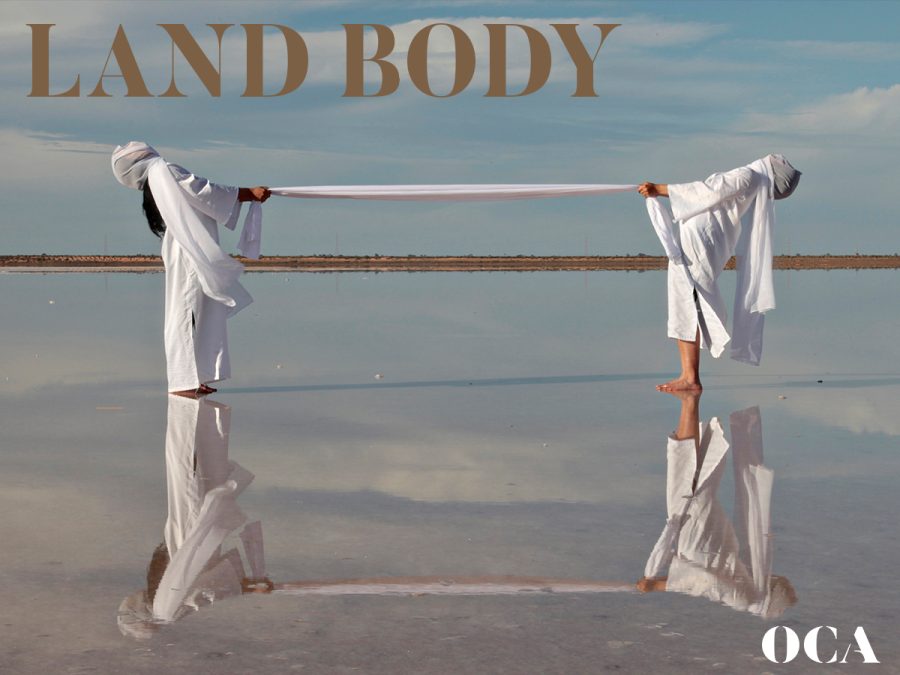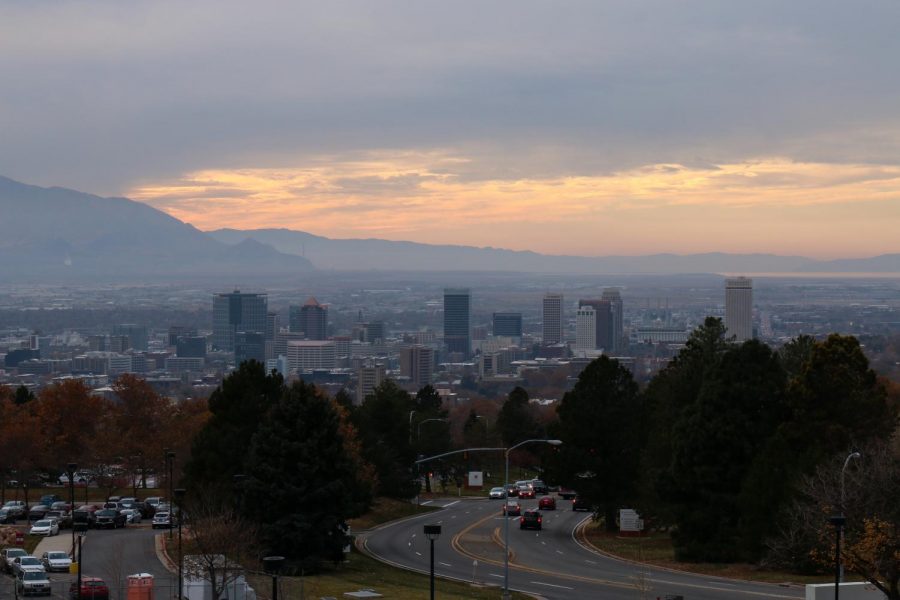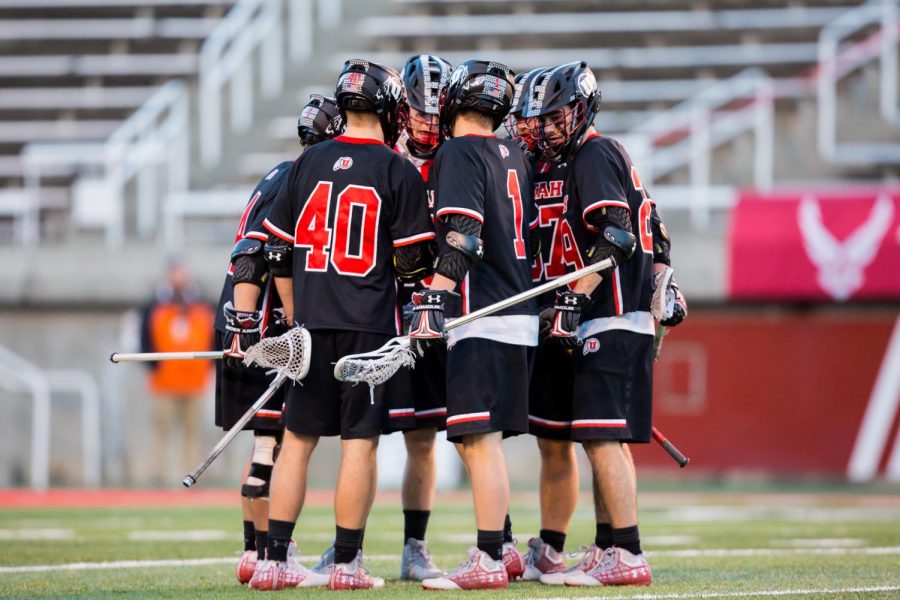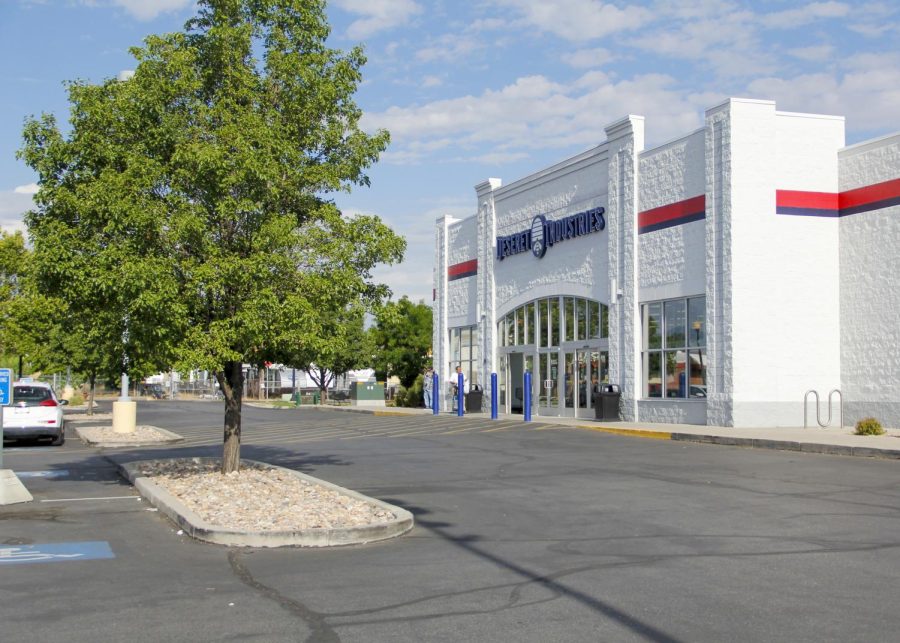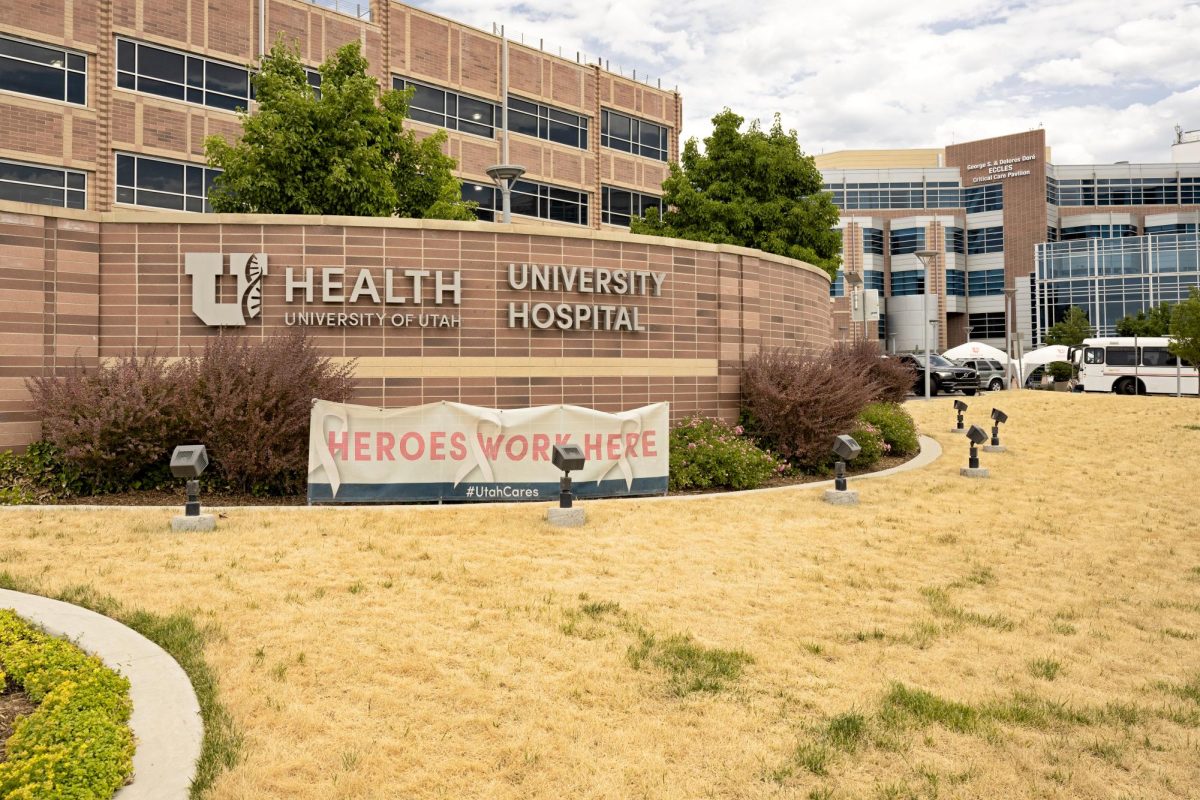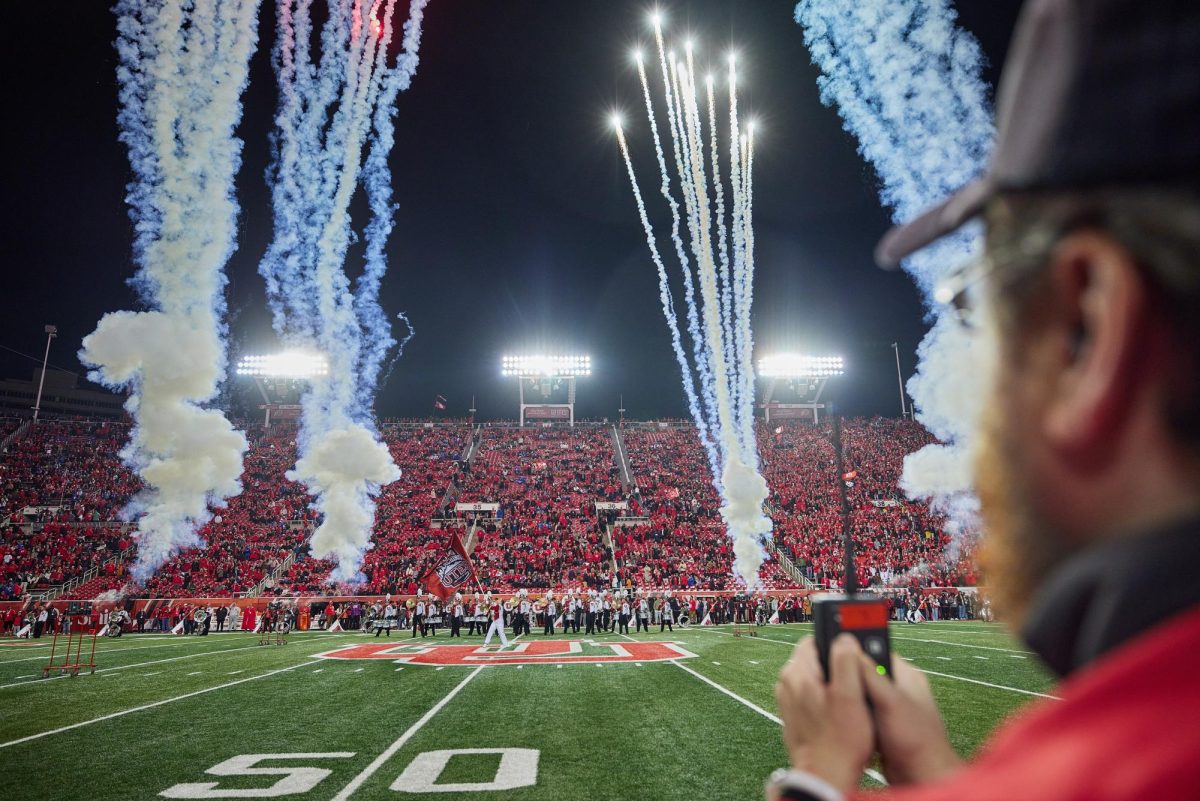‘Land Body’ at OCA: An Exploration of the Female Body and Landscape
January 11, 2022
The connection between femininity and the earth has been deeply ingrained into our cultural consciousness. From the earliest points of art history, male artists fostered feminine connotations of the earth with their depiction of the female figures. In the canon of Western art, the male perspective of the female body and its connection to our conception of land has become an untouchable part of this canon. Ogden Contemporary Arts (OCA) radically challenges these traditions in their latest exhibition “Land Body.” This exhibition centers the perspective of 11 female-identified artists whose art explores ideas of the female body and land.
Indigenous Perspectives
The striking photographs of Chemehuevi artist Cara Romero pulled me in. Romero’s two photographs in the exhibition blend together their subjects and the earth. The figures in both artworks stare out at the viewer as their bodies are buried and blurred into the desert landscape. These visceral photographs engage with ideas of how specifically Indigenous women’s bodies and their connection to their ancestral homelands.
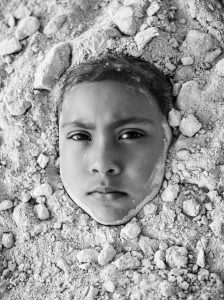
I found “Abigail” particularly powerful. The cold and questioning stare of the child in this photograph would not let me leave it. This inanimate photograph, through its subject, invades the viewer’s space not allowing anyone to pass without feeling its stare. “Abigail” also connects to the horrors of residential schools uncovering the remains of Indigenous children buried beneath them. Romero’s photographs investigate these relationships between the indigenous body and its often violent return to the earth.
Liminal Space
The loud booms and industrial clang of the installation piece by Sonia and Miriam Albert-Sobrino, better known as the Also Sisters, could be heard throughout the exhibition. “On the Margins of Metaxy” explores the female body in imagined landscapes with nightmare-like imagery. Blinking eyes and distorted bodies projected on walls and moving acrylic sheets creates a disorienting experience. There is nowhere to rest in this installation — the senses are overwhelmed by the ever-changing scene.
The exhibition also features work from professor Al Denyer. This experimental work titled “Ridgeline” is a break from Denyer’s typical style of black and white paintings and drawing, opting for a fluorescent blue yarn installation work. “Ridgeline” mirrors the form of a local mountain range here in Utah, radically connecting the feminine ideas tied to these fibrous materials with those of the landscape.
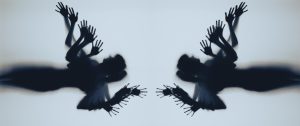
Connection to the University
“Land Body” also includes works by two professors from the U. The evocative photographs of Jaclyn Wright and Wendy Wisher explore the relationship between the body and land with a distinctly Utah perspective.
Wright’s photographs place the female body into a flattened landscape littered with shooting targets and clay pigeons. The figure’s pose mirrors that of reclining nudes scenes throughout art history. These photographs speak to the violence and damage perpetuated by these historic images and ideas. Wischer’s “to Breathe” examines the relationship between her own breath and the breath of the earth. The multimedia sculpture and sound piece connects the vital act of breathing to the deadly release of the gases from the Salt Flats in Western Utah.
In a press release for the showing, curator Kelly Carper directs attention to how “Land Body” draws, “metaphorical and physical connections between desert landscapes and women’s bodies while broadly reflecting on the interconnectedness between humans and the natural world.” Experiencing it firsthand brought this theme, and the vast perspectives of the artists involved, to light.
“Land Body” runs until Feb. 20, 2022 at Ogden Contemporary Arts.


